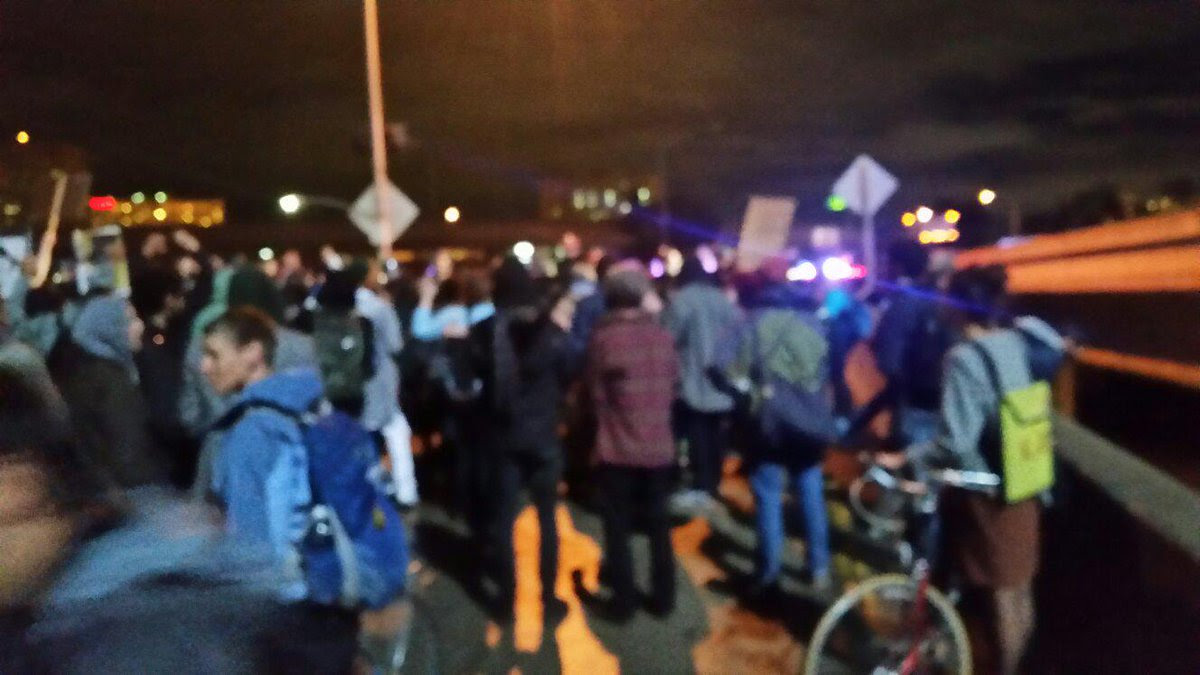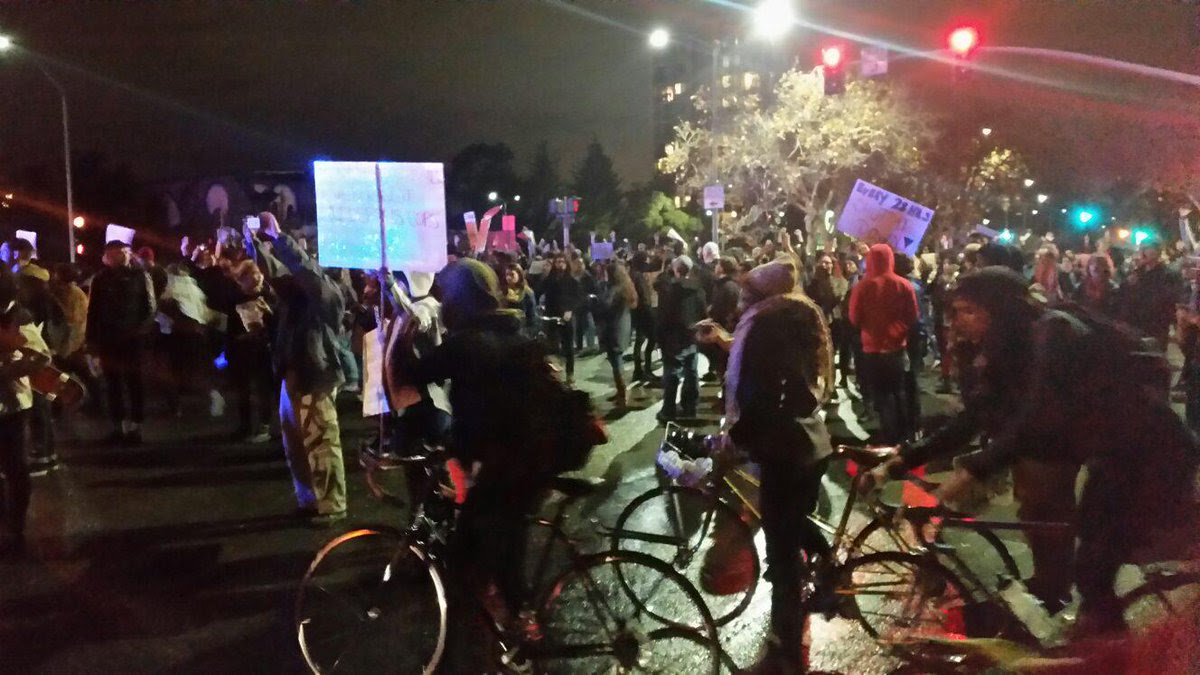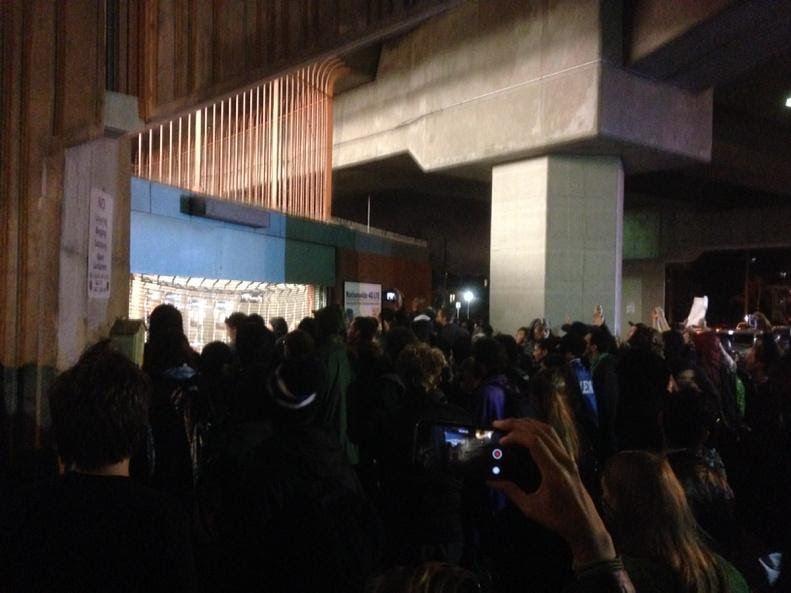The Fear of Being Touched
There is nothing that man fears more than the touch of the unknown. He wants to see what is reaching towards him, and to be able to recognize or at least classify it. Man always tends to avoid physical contact with anything strange. In the dark, the fear of an unexpected touch can mount to panic. Even clothes give insufficient security: it is easy to tear them and pierce through to the naked, smooth, defenceless flesh of the victim.
All the distances which men create round themselves are dictated by this fear. They shut themselves in houses which no one may enter, and only there feel some measure of security. The fear of burglars is not only the fear of being robbed, but also the fear of a sudden and unexpected clutch out of the darkness.
The repugnance to being touched remains with us when we go out among people; the way we move in a busy street, in restaurants, trains or buses, is governed by it. Even when we are standing next to them and are able to watch and examine them closely, we avoid actual contact if we can. If we do not avoid it, it is because we feel attracted to someone; and then it is we who make the approach.
The promptness with which apology is offered for an unintentional contact, the tension with which it is awaited, our violent and sometimes even physical reaction when it is not forthcoming, the antipathy and hatred we feel for the offender, even when we cannot be certain who it is -- the whole knot of shifting and intensely sensitive reactions to an alien touch -- proves that we are dealing here with a human propensity as deep-seated as it is alert and insidious; something which never leaves a man when he has once established the boundaries of his personality. Even in sleep, when he is far more unguarded, he can all too easily be disturbed by a touch.
It is only in a crowd that man can become free of this fear of being touched. That is the only situation in which the fear changes into its opposite. The crowd he needs is the dense crowd, in which body is pressed to body; a crowd, too, whose physical constitution is also dense, or compact, so that he no longer notices who it is that presses against him. As soon as a man has surrendered himself to the crowd, he ceases to fear its touch. Ideally, all are equal there; no distinctions count, not even that of sex. The man pressed against him is the same as himself. He feels him as he feels himself. Suddenly it is as though everything were happening in one and the same body. This is perhaps one of the reasons why a crowd seeks to close in on itself: it wants to rid each individual as completely as possible of the fear of being touched. The more fiercely people press together, the more certain they feel that they do not fear each other. The reversal of the fear of being touched belongs to the nature of crowds. The feeling of relief is most striking where the density of the crowd is greatest.
Elias Canetti (1905-1994): The Fear of Being Touched, from Crowds and Power (Masse und Macht), 1960, English translation by Carol Stewart, 1962)

There is nothing that man fears more than the touch of the unknown. He wants to see what is reaching towards him, and to be able to recognize or at least classify it. Man always tends to avoid physical contact with anything strange. In the dark, the fear of an unexpected touch can mount to panic. Even clothes give insufficient security: it is easy to tear them and pierce through to the naked, smooth, defenceless flesh of the victim.
All the distances which men create round themselves are dictated by this fear. They shut themselves in houses which no one may enter, and only there feel some measure of security. The fear of burglars is not only the fear of being robbed, but also the fear of a sudden and unexpected clutch out of the darkness.
The repugnance to being touched remains with us when we go out among people; the way we move in a busy street, in restaurants, trains or buses, is governed by it. Even when we are standing next to them and are able to watch and examine them closely, we avoid actual contact if we can. If we do not avoid it, it is because we feel attracted to someone; and then it is we who make the approach.
The promptness with which apology is offered for an unintentional contact, the tension with which it is awaited, our violent and sometimes even physical reaction when it is not forthcoming, the antipathy and hatred we feel for the offender, even when we cannot be certain who it is -- the whole knot of shifting and intensely sensitive reactions to an alien touch -- proves that we are dealing here with a human propensity as deep-seated as it is alert and insidious; something which never leaves a man when he has once established the boundaries of his personality. Even in sleep, when he is far more unguarded, he can all too easily be disturbed by a touch.
It is only in a crowd that man can become free of this fear of being touched. That is the only situation in which the fear changes into its opposite. The crowd he needs is the dense crowd, in which body is pressed to body; a crowd, too, whose physical constitution is also dense, or compact, so that he no longer notices who it is that presses against him. As soon as a man has surrendered himself to the crowd, he ceases to fear its touch. Ideally, all are equal there; no distinctions count, not even that of sex. The man pressed against him is the same as himself. He feels him as he feels himself. Suddenly it is as though everything were happening in one and the same body. This is perhaps one of the reasons why a crowd seeks to close in on itself: it wants to rid each individual as completely as possible of the fear of being touched. The more fiercely people press together, the more certain they feel that they do not fear each other. The reversal of the fear of being touched belongs to the nature of crowds. The feeling of relief is most striking where the density of the crowd is greatest.
Elias Canetti (1905-1994): The Fear of Being Touched, from Crowds and Power (Masse und Macht), 1960, English translation by Carol Stewart, 1962)
@OAKLANDPOLICECA coming up fast behind group on Webster unlawful
assembly declared #Oakland #EricGarner: image via Scott Morris @OakMorr,
5 December 2014

Hella more on top of the ramp. Tense situation up here, talk of arrests #Oakland #EricGarner: image via Scott Morris @OakMorr, 5 December
Hella protesters just came off 880 onto Market in West #Oakland #EricGarner: image via Scott Morris @OakMorr, 5 December 2014
The #Oakland protest is on the 880 off ramp near Brush and 6th St., OPD helicopter overhead: image via 残念星 @GonzOakland, 5 December 2014
The Attributes of the Crowd
Before I try to undertake a classification of crowds it may be useful to summarize briefly their main attributes. The following four traits are important.
1. The crowd always wants to grow. There are no natural boundaries to its growth. Where such boundaries have been artificially created -- e.g. in all institutions which are used for the preservation of closed crowds -- an eruption of the crowd is always possible and will, in fact, happen from time to time. There are no institutions which can be absolutely relied on to prevent the growth of the crowd once and for all.
2. Within the crowd there is equality. This is absolute and indisputable and never questioned by the crowd itself. It is of fundamental importance and one might even define a crowd as a state of absolute equality. A head is a head, an arm is an arm, and differences between individual heads and arms are irrelevant. It is for the sake of this equality that people become a crowd and they tend to overlook anything which might detract from it. All demands for justice and all theories of equality ultimately derive their energy from the actual experience of equality familiar to anyone who has been part of a crowd.
3. The crowd loves density. It can never feel too dense. Nothing must stand between its parts or divide them; everything must be the crowd itself. The feeling of density is strongest in the moment of discharge. One day it may be possible to determine this density more accurately and even to measure it.
4. The crowd needs a direction. It is in movement and it moves towards a goal. The direction, which is common to all its members, strengthens the feeling of equality. A goal outside the individual members and common to all of them drives underground all the private differing goals which are fatal to the crowd as such. Direction is essential for the continuing existence of the crowd. It’s constant fear of disintegration means that it will accept any goal. A crowd exists so long as it has an unattained goal.
There is, however, another tendency hidden in the crowd, which appears to lead to new and superior kinds of formation. The nature of these is often not predictable.
Elias Canetti (1905-1994): The Attributes of the Crowd, from Crowds and Power (Masse und Macht), 1960, English translation by Carol Stewart, 1962)
BREAKING: #Oakland protesters have blocked highway 880 both directions, chanting, "Shut it down!" #EricGarner: image bia Bipartisan Report #Bipartisanism, 5 December 2014
RTkMorr: Protesters have surrounded both sides of West #Oakland @sfbart station. Some passengers stranded on platform: image via Jessie Lorenz, 5 December 2014

Demonstrators banging on gate of West #oakland bart - chanting "Oscar Grant": image via Erin Baldessari @e_baldi, 2 December 2014

Demonstrators banging on gate of West #oakland bart - chanting "Oscar Grant": image via Erin Baldessari @e_baldi, 2 December 2014
#OaklandFerguson at w #oakland BART. #EricGarner: image via Nate Cavalieri @natecavalieri, 5 December 2014
Gates forced at west #Oakland BART to chants of #OscarGrant, #youcantshootusall: image via Ali Winston @awinston, 5 December 2014
The scene on 880 #Oakland: image via Vivek Vivekster @vivekster, 5 December 2014
The police closed 27th and Broadway in #Oakland: image via Jorge Lee @jrglee, 5 December 2014














3 comments:
maybe the shades between an individual touch or a crowd touch are difficult to separate...now I think about the word "pudor" (I am not sure if the translation is modesty) that is a natural characteristic of humans
"You can't shoot us all"
"Suddenly, it is as though everything were happening in one and the same body"
Here's to the crowd - the true body politic - fearless before Garner's murderers.
Tonight: street warfare, masses of dark knights with vizors down, smoke, gas, choppers, searchlights in the sky, in short the whole wondrous panoply of seasonal cheer.
Slipping the Chain
Post a Comment